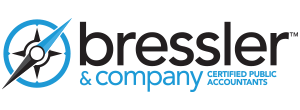Business Resilience: Through Precise Cash Flow Management
Planning, strategy, goal-setting… they’re all critically important… but without cash, a business is very unlikely to succeed, let alone survive. A resilient business is one with sufficient funds for operations and growth, now and in the future.
Managing cash flow is crucial, especially in a tough business environment. And it’s not just a financial, accounting or ‘modeling’ challenge. It is a business challengewhich requires an understanding of the market, the goals, the plans and the priorities.
Let’s simplify this complex subject by looking at the components.
Inbound cash from Operations
Sales forecasts require market understanding; a deep knowledge of your customers, the competition and market trends to forecast demand:
- Which products will you sell? (Or which categories of products)
- How much will you sell? (Sales volumes)
- When will you make these sales? (Demand can differ due to seasonal factors)
- What price will you sell at? (A small change in price can make a big difference to revenue)
- What are the payment terms? (Some businesses get paid immediately and others collect the cash over a long period)
A business that simply looks at last year’s sales figures and adds a percentage risks being way off the mark. Remember, a forecast will never be entirely accurate so a resilient business will project the best, worst and expected cases to establish a range of possible outcomes.
Inbound cash from sources other than Operations
Perhaps you can access cash from external sources. ‘Traditional’ lenders such as banks are a source of funds but they will usually require collateral. Current investors may provide capital either in the form of debt or by purchasing shares, though this may dilute the holdings of existing shareholders.
In some cases, management may contribute either through reduced compensation, cash loans or investments.
Some businesses have assets which they can sell in order to raise capital.
In the current environment, there are government grant and loan programs, but these can produce an artificial sense of well-being.
These sources carry risks and sometimes the promise of additional capital will not materialize. Resilient businesses will examine various scenarios and their implications to cash flow.
Outbound cash from Operations
Costs of Goods Sold (or ‘COGS’) are incurred to produce and provide your product to customers. Every business is different but COGS might include the costs of materials used in manufacturing or the costs of personnel in a service business. Reducing COGS (as a percentage of revenue) increases your (gross) profitability.
General expenses (expenses other than COGS) are incurred across a whole range of business functions: marketing, technology, personnel, rent, R&D, administration etc.
There are usually opportunities to reduce expenses, for example, by choosing a different supplier. Resilient businesses quantify the returns received from any expense. For example, you’d hope a large investment in marketing generates many business leads. If that’s not the case, maybe the cash should be saved or spent elsewhere. Accountants can help quantify the return on investment from various categories of expenses.
Resilient businesses will forecast outgoing cash in the best, worst and expected cases.
Outbound cash not due to Operations
A business may need to make payments which don’t arise from the ordinary course of business. Shareholders may (suddenly) require the payment of dividends. A lender who has allowed late payments may ask that repayment is expedited. Unforeseen litigation or fines may eat into cash reserves.
While these events are often unpredictable, assumptions can still be made in the best, worst and expected cases, which helps cash flow forecasting.
Here are some other Cash Flow Management Best Practices employed by Resilient Businesses:
| 1. Measure Cash Burn Rates. This is the rate at which cash is consumed and explains how long cash reserves will last. Any increase in spending will accelerate the cash burn rate and the need for additional funds.
2. Know Your Breakeven Points. This describes how much you need to sell in order to fund all expenses OR how much you can spend at the projected rate of sales. 3. Set Cash Targets. Resilient businesses will set short and long-term cash targets which may need adjustment as business conditions evolve. 4. Track Cash Performance. Measuring progress against targets allows leadership to change course if necessary. 5. Set Cash Policies. Management of cash should be policy-driven. For example, Accounts Receivable, Accounts Payable and maintaining cash reserves should be based on astute guidelines to enable consistency and business-wide implementation. 6. Set Credit rules. Some businesses extend credit to customers and suppliers so the associated rules should be based on an understanding of risk. |
In conclusion, forecasting cash flow requires a good understanding of the entire business and the market. Things can turn very quickly … so give cash flow management the (strategic) time it deserves, especially in challenging conditions.
We’d like to ensure you have the best possible understanding of cash flow — give us a call so we can talk — 559.924.1225!





